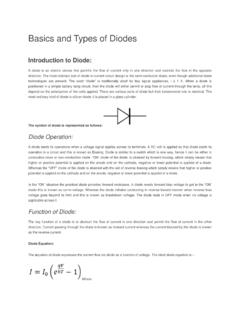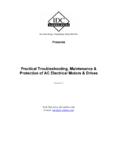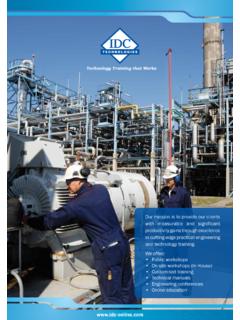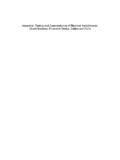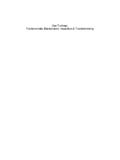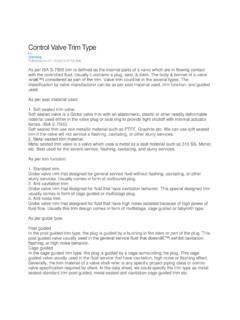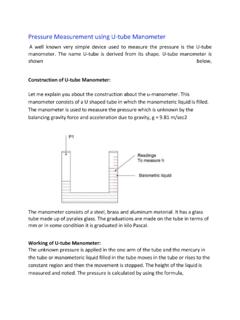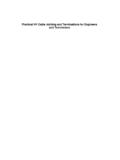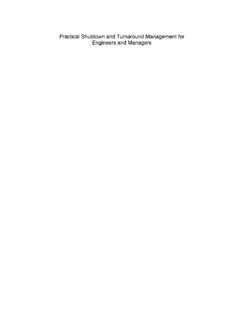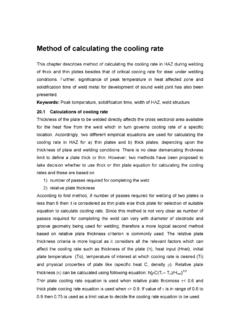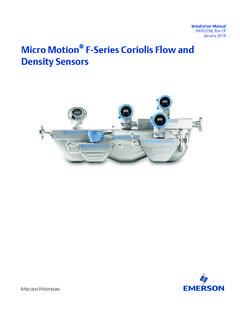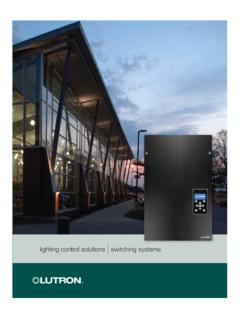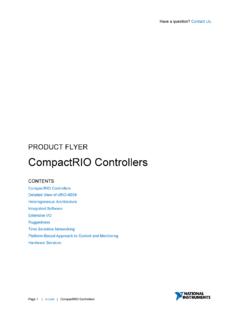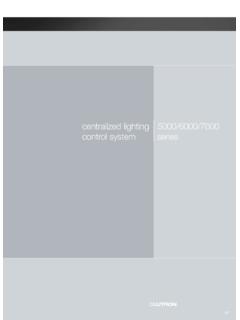Transcription of BINARY-CODED DECIMAL (BCD) - Engineering …
1 BINARY-CODED DECIMAL (BCD) Definition The BINARY-CODED DECIMAL (BCD) is an encoding for DECIMAL numbers in which each digit is represented by its own binary sequence. Basics In computing and electronic systems, BINARY-CODED DECIMAL (BCD) is an encoding for DECIMAL numbers in which each digit is represented by its own binary sequence. Its main virtue is that it allows easy conversion to DECIMAL digits for printing or display and faster DECIMAL calculations. Its drawbacks are the increased complexity of circuits needed to implement mathematical operations and a relatively inefficient encoding it occupies more space than a pure binary representation. Even though the importance of BCD has diminished, it is still widely used in financial, commercial, and industrial applications. In BCD, a digit is usually represented by four bits which, in general, represent the values/digits/characters 0-9.
2 Other bit combinations are sometimes used for sign or other indications. To BCD-encode a DECIMAL number using the common encoding, each DECIMAL digit is stored in a four-bit nibble. DECIMAL : 0 1 2 3 4 5 6 7 8 9 BCD: 0000 0001 0010 0011 0100 0101 0110 0111 1000 1001 Thus, the BCD encoding for the number 127 would be: 0001 0010 0111 Since most computers store data in eight-bit bytes, there are two common ways of storing four-bit BCD digits in those bytes: each digit is stored in one byte, and the other four bits are then set to all zeros, all ones (as in the EBCDIC code), or to 0011 (as in the ASCII code) two digits are stored in each byte. Unlike binary encoded numbers, BCD encoded numbers can easily be displayed by mapping each of the nibbles to a different character.
3 Converting a binary encoded number to DECIMAL for display is much harder involving integer multiplication or divide operations. BCD in electronics BCD is very common in electronic systems where a numeric value is to be displayed, especially in systems consisting solely of digital logic, and not containing a microprocessor. By utilising BCD, the manipulation of numerical data for display can be greatly simplified by treating each digit as a separate single sub-circuit. This matches much more closely the physical reality of display hardware a designer might choose to use a series of separate identical 7-segment displays to build a metering circuit, for example. If the numeric quantity were stored and manipulated as pure binary , interfacing to such a display would require complex circuitry. Therefore, in cases where the calculations are relatively simple working throughout with BCD can lead to a simpler overall system than converting to 'pure' binary .
4 The same argument applies when hardware of this type uses an embedded microcontroller or other small processor. Often, smaller code results when representing numbers internally in BCD format, since a conversion from or to binary representation can be expensive on such limited processors. For these applications, some small processors feature BCD arithmetic modes, which assist when writing routines that manipulate BCD quantities. Packed BCD A widely used variation of the two-digits-per-byte encoding is called packed BCD (or simply packed DECIMAL ), where numbers are stored with two DECIMAL digits "packed" into one byte each, and the last digit (or nibble) is used as a sign indicator. The preferred sign values are 1100 (hex C) for positive (+) and 1101 (hex D) for negative ( ); other allowed signs are 1010 (A) and 1110 (E) for positive and 1011 (B) for negative.
5 Some implementations also provide unsigned BCD values with a sign nibble of 1111 (hex F). In packed BCD, the number +127 is represented as the bytes 00010010 01111100 (hex 12 7C), and 127 as 00010010 01111101 (hex 12 7D). Sign Digit BCD 8 4 2 1 Sign A 1 0 1 0 + B 1 0 1 1 C 1 1 0 0 + (preferred) D 1 1 0 1 (preferred) E 1 1 1 0 + F 1 1 1 1 + (unsigned) Packing four-bit digits and a sign into eight-bit bytes means that an n-byte packed DECIMAL value (where n typically ranges from 1 to 15) contains 2n 1 DECIMAL digits (which is always an odd number of digits). In other words, d DECIMAL digits require a packed DECIMAL representation that is (d+1) bytes wide. For example, a four-byte packed DECIMAL number holds seven DECIMAL digits plus a sign, and can represent values from 0,000,000 to 9,999,999. In contrast, a four-byte binary two's complement integer can represent values from 2,147,483,648 to +2,147,483,647.
6 While packed BCD does not make optimal use of storage (about 1/6 of the required memory is wasted), conversion to ASCII, EBCDIC, or the various encodings of Unicode is still trivial, as no arithmetic operations are required. The extra storage requirements are usually offset by the need for the accuracy that fixed-point DECIMAL arithmetic provides. More dense packings of BCD exist which avoid the storage penalty and also need no arithmetic operations for common conversions. Fixed-point packed DECIMAL Fixed-point DECIMAL numbers are supported by some programming languages (such as COBOL and PL/1), and provide an implicit DECIMAL point in front of one of the digits. For example, a packed DECIMAL value encoded with the bytes 12 34 56 7C represents the fixed-point value +1, when the implied DECIMAL point is located between the 4th and 5th digits.
7 Higher-density encodings If a DECIMAL digit requires four bits, then three DECIMAL digits require 12 bits. However, since 210>103, if three DECIMAL digits are encoded together then only 10 bits are needed. Two such encodings are Chen-Ho encoding and Densely Packed DECIMAL . The latter has the advantage that subsets of the encoding encode two digits in the optimal 7 bits and one digit in 4 bits, as in regular BCD. Zoned DECIMAL Some implementations (notably IBM mainframe systems) support zoned DECIMAL numeric representations. Each DECIMAL digit is stored in one byte, with the lower four bits encoding the digit in BCD form. The upper four bits, called the "zone" bits, are usually set to a fixed value so that the byte holds a character value corresponding to the digit. EBCDIC systems use a zone value of 1111 (hex F); this yields bytes in the range F0 to F9 (hex), which are the EBCDIC codes for the characters "0" through "9".
8 Similarly, ASCII systems use a zone value of 0011 (hex 3), giving character codes 30 to 39 (hex). For signed zoned DECIMAL values, the rightmost (least significant) zone nibble holds the sign digit, which is the same set of values that are used for signed packed DECIMAL numbers (see above). Thus a zoned DECIMAL value encoded as the hex bytes F1 F2 D3 represents the signed DECIMAL value 123. Fixed-point zone DECIMAL Some languages (such as COBOL and PL/1) directly support fixed-point zoned DECIMAL values, assiging an implicit DECIMAL point at some location between the DECIMAL digits of a number. For example, given a six-byte signed zoned DECIMAL value with an implied DECIMAL point to the right of the 4th digit, the hex bytes F1 F2 F7 F9 F5 C0 represent the value +1, IBM and BCD IBM used the terms BINARY-CODED DECIMAL and BCD for six-bit alphameric codes that represented numbers, upper-case letters and special characters.
9 Some variation of BCD was used in most early IBM computers, including the IBM 1620, IBM 1400 series, and non- DECIMAL Architecture members of the IBM 700/7000 series. With the introduction of System/360, IBM replaced BCD with 8-bit EBCDIC. Bit positions in BCD were usually labelled B, A, 8, 4, 2 and 1. For encoding digits, B and A were zero. The letter A was encoded (B,A,1). In the 1620 BCD alphamerics were encoded using digit pairs, with the "zone" in the even digit and the "digit" in the odd digit. Input/Output translation hardware converted between the internal digit pairs and the external standard six-bit BCD codes. In the DECIMAL Architecture IBM 7070, IBM 7072, and IBM 7074 alphamerics were encoded using digit pairs (using two-out-of-five code in the digits, not BCD) of the 10-digit word, with the "zone" in the left digit and the "digit" in the right digit.
10 Input/Output translation hardware converted between the internal digit pairs and the external standard six-bit BCD codes. Today, BCD is still heavily used in IBM processors and databases, such as IBM DB2, mainframes and Power6. In these products, the BCD is usually zoned BCD (as in EBCDIC or ASCII), Packed BCD, or 'pure' BCD encoding. All of these are used in within hardware registers and processing units and in software. Addition with BCD To perform addition in BCD, you can first add-up in binary format, and then perform the conversion to BCD afterwards. This conversion involves adding 6 to each group of four digits that has a value of greater-than 9. For example: 9+5=14 = [1001] + [0101] = [1110] in binary . However, in BCD, we cannot have a value greater-than 9 (1001) per-nibble. To correct this, one adds 6 to that group: [0000 1110] + [0000 0110] = [0001 0100] which gives us two nibbles, [0001] and [0100] which correspond to "1" and "4" respectively.
